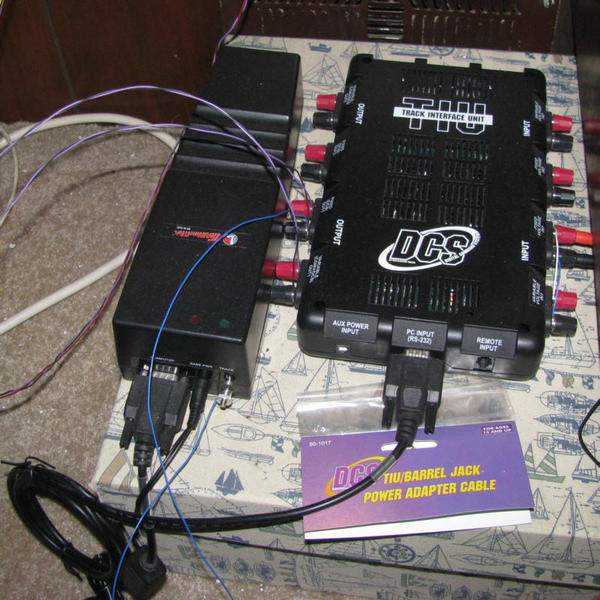(emphasis mine)
Alll-righty then!
(edit: I started my post right after gunrunnerjohn's reply--three others posted while I was writing this)
What you've pictured is a starter-set transformer, and not a particularly powerful one at that. It'll most likely run either of your two locos, but you'll find it running out of horsepower pretty early in the game as you expand. The Z-1000 transformer by MTH is a good step-up in power. If you're looking at top-of-the-line power, there's the MTH Z-4000, which has been around for many years and is highly regarded around here, or the Lionel ZW-L, which is relatively newer, but in the same "high power" class that generally means you won't need to upgrade further, regardless of how heavy your trains become.
Conventional versus Command:
--Conventional means traditional transformer control. You put a low voltage to the track, the train moves. More volts=more speed.
--Command means each locomotive is equipped with what amounts to a "digital engineer" that only responds to signals meant specifically for it. The track is electrified at a constant voltage (usually 18 volts) and the individual command-equipped locomotives only take what their electronics (under your control) tell them to take, by way of a remote control wirelessly linked to a control box connected to the track. The upshot of this is you can have multiple locomotives independently doing their thing all on the same track.
There are two dominant types of command-control in the 3-rail O Gauge train hobby:
--Lionel's TrainMaster Command Control (TMCC) and it's upscale replacement, Legacy
--Digital Command System (DCS) by Lionel's biggest competition, MTH.
Neither system directly operates the other, but because Lionel made its TMCC control codes public (at the time it was the only system around), that system's control box can be operated by another computer connected to a serial port on its side. MTH took advantage of this while designing its own DCS system, and included the ability to connect to and operate a TMCC control box from its own system, as shown by the photo below:

MTH kept its own codes a company secret, thus the DCS control box cannot be operated by anything other than MTH hardware.
Lionel, during the time TMCC was its sole command system, licensed the receiver electronics to a limited number of other manufacturers (notably Weaver, Atlas O and K-Line) to include in their own locomotives. This practice ended with the introduction of Legacy (and a change of upper management). These companies can still include TMCC electronics in their locomotives--they just can't perform the same tricks Legacy units can.
In practice, both systems can operate on the same track at the same time, and those desiring the most flexibility have equipped their layouts with both systems.
As for control of engines not equipped with command electronics, both systems can operate conventional locomotives on seperate tracks. DCS has this ability built in. Both of Lionel's systems require an additional box called a "Track Power Controller" that is basically a remote-controlled transformer handle that is hooked up between the track power supply and the track itself.
And last but not least, locomotives not equipped with command electronics can be equipped with either TMCC receivers from The Electric RR Co. or (assuming the loco has flywheel-equipped can motors) DCS upgrade kits. Legacy electronics are not available as a retrofit.
---PCJ





